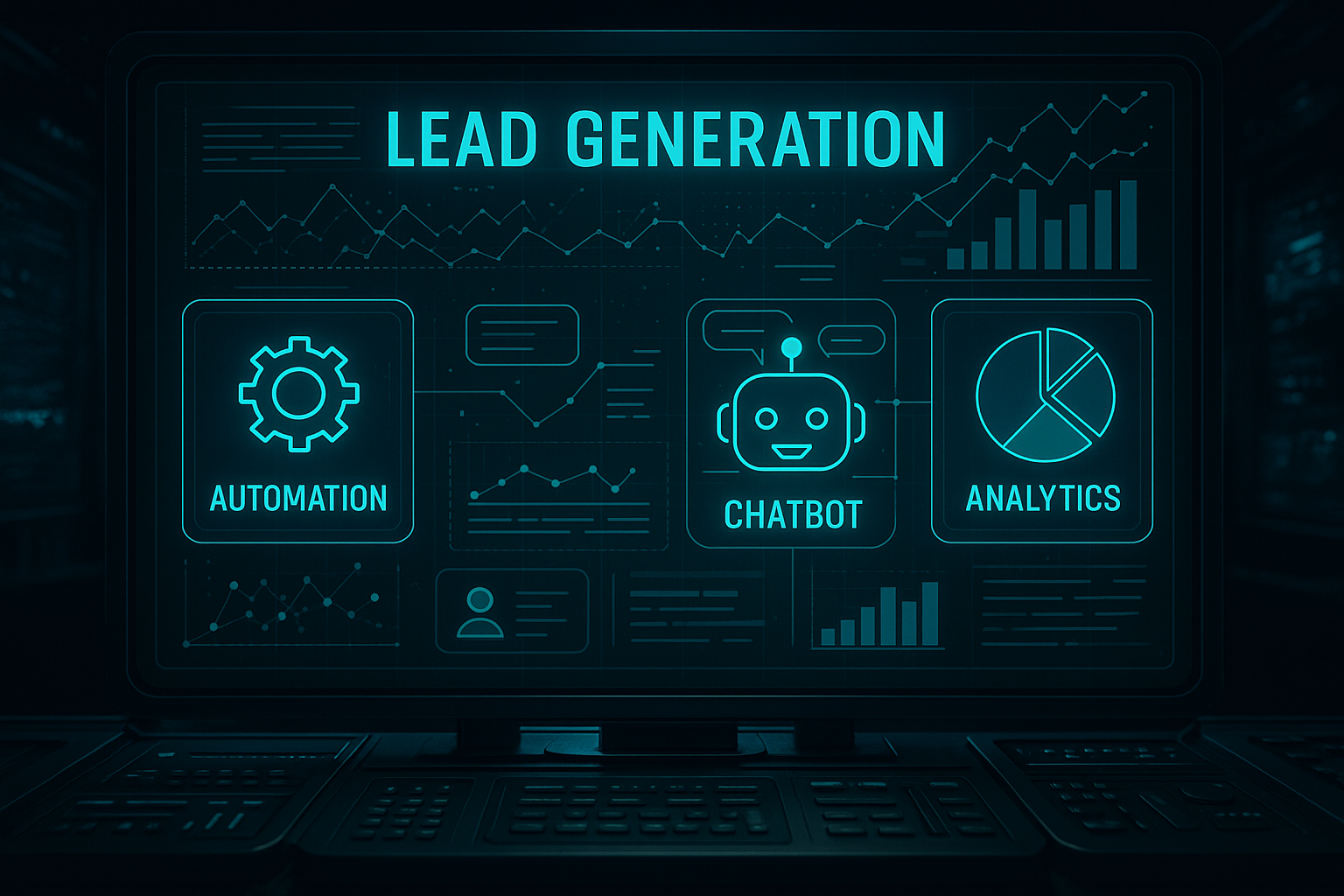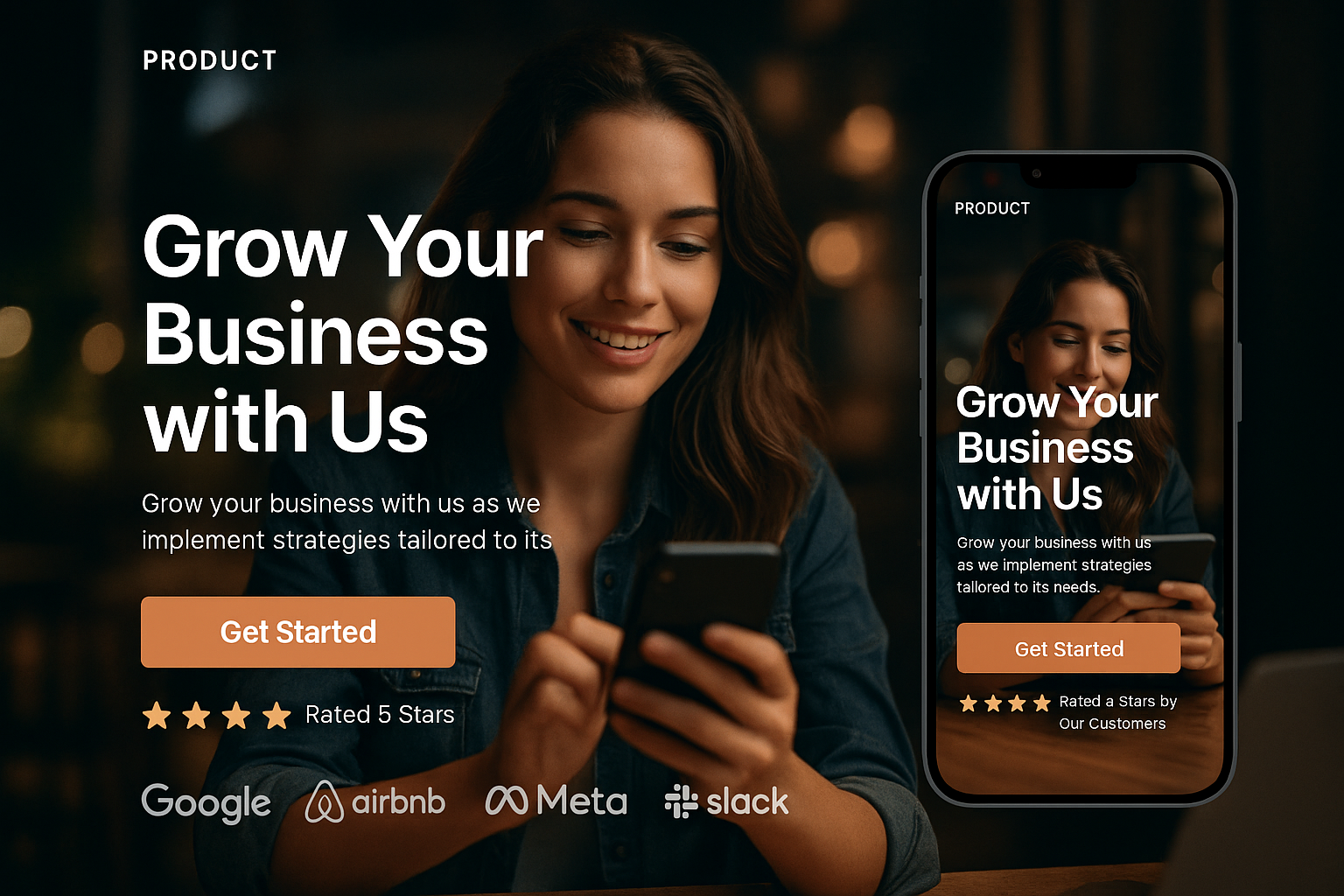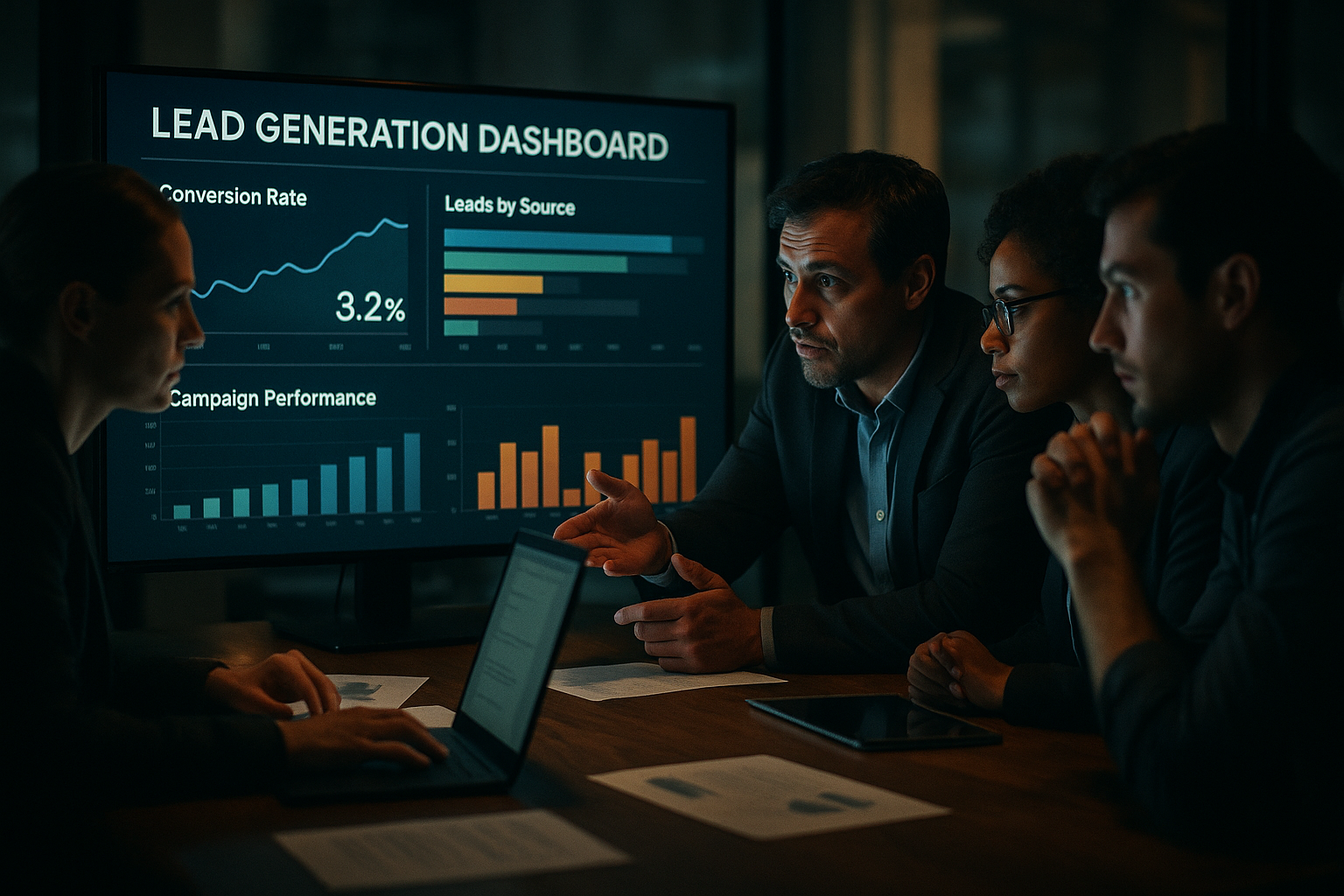Top 10 Lead Generation Solutions to Supercharge Your Pipeline in 2025
Every successful business knows that lead generation solutions are the backbone of predictable growth.
But what are they, exactly?
In this ultimate listicle, you'll get a zero-fluff cheatsheet to the 10 most effective lead generation solutions for 2025—complete with expert tips, new trends, and actionable strategies.
Some are lightning-fast, automating what used to take hours.
Some are slow burns, compounding results month after month.
Some are powered by cutting-edge AI and intent data.
Some are old-school, but still deliver jaw-dropping ROI.
Some will help you sidestep mistakes that drain budgets and morale.
Let's dive right in.
Why Lead Generation Solutions Matter in 2025
Lead generation solutions are more than just fancy tools—they're essential engines that attract, identify, and convert prospects into loyal customers. Without a steady stream of qualified leads, even the slickest product or pitch falls flat. In 2025, the competition is fierce, buyer journeys are fragmented, and attention spans are microscopic. That's why the right lead generation solutions can make or break your business growth.
- Expand your reach and brand awareness—automatically.
- Fill your sales funnel with high-intent, high-value prospects.
- Shorten sales cycles and boost conversion rates with personalization at scale.
- Drive ROI by focusing resources on what actually works.
From AI-powered automation to data-driven targeting, modern solutions empower you to work smarter—not harder. And when you combine the right mix, you don’t just generate more leads—you build a predictable, scalable pipeline.

Top 10 Lead Generation Solutions for 2025
1. Marketing Automation Platforms (e.g., HubSpot, Salesforce Marketing Cloud)
Marketing automation platforms remain the nerve center for scalable lead generation. Tools like HubSpot and Salesforce Marketing Cloud bring email, social, CRM, and analytics under one roof. The result? Seamless, data-driven campaigns that nurture leads through every funnel stage.
- Drag-and-drop builders for emails, landing pages, and forms.
- Automated workflows—think welcome sequences, drip campaigns, and lead scoring.
- Deep CRM integration for instant sales handoff.
- Predictive lead scoring with AI to prioritize the hottest prospects.
Pro Tip: Use behavioral triggers (like webinar signups or case study downloads) to activate highly personalized nurture sequences. According to Salesforce research, automation can cut manual effort by up to 40% and turbocharge conversion rates.
2. CRM with Lead Capture and Pipeline Automation (e.g., HubSpot CRM, Zoho CRM, Pipedrive)
Modern CRMs do so much more than store contacts. Platforms like HubSpot CRM, Zoho CRM, and Pipedrive now include built-in lead capture, scoring, automation, and customizable pipelines. This means you can track every interaction, measure ROI, and ensure no lead slips through the cracks.
- Customizable web forms and progressive profiling for smarter data collection.
- Automated lead assignment and follow-up reminders.
- Visual pipeline management—drag and drop deals, set priorities, and forecast revenue.
- Native integrations with other lead gen tools and marketing platforms.
Pro Tip: Implement dynamic lead scoring to focus your team’s energy on high-value prospects, not tire-kickers. For more CRM data enrichment strategies, check out this in-depth guide.
3. Email Marketing & Cold Outreach Tools (e.g., Mailchimp, Saleshandy, Instantly)
Email is still the highest-ROI channel for B2B lead generation. But in 2025, success comes from segmentation, automation, and relentless testing. Tools like Mailchimp, Saleshandy, and Instantly make it easy to build lists, personalize campaigns, and automate follow-ups.
- Segment leads by behavior, demographics, and engagement.
- Automate drip campaigns and trigger sequences based on real-time actions.
- Advanced personalization—think dynamic content, tailored offers, and AI-powered subject lines.
- Built-in deliverability checks and automatic list cleaning.
Pro Tip: Verify emails at the point of capture to slash bounce rates and improve sender reputation. Clean lists and strong list hygiene are non-negotiable for high-performing campaigns (learn why here).
4. Landing Page & Form Builders (e.g., Unbounce, OptinMonster)
Your landing page can be the difference between a hot lead and a bounce. The best builders—like Unbounce and OptinMonster—let you launch, test, and optimize pages in minutes. Features like dynamic text replacement, A/B testing, and real-time analytics mean you’re always improving conversions.
- Over 100 mobile-optimized templates.
- Drag-and-drop customization—no coding needed.
- Popups, sticky bars, and exit-intent forms for maximum capture.
- Integration with CRM and automation tools for instant follow-up.
Pro Tip: Use intent-based popups to capture leads who are about to leave. Small tweaks can boost conversions by 30% or more.

5. Conversational Marketing: Live Chat & AI Chatbots (e.g., Drift, Intercom)
Real-time chat is now table stakes. Platforms like Drift and Intercom use AI chatbots to greet visitors, qualify leads, and even book meetings—24/7. This immediacy captures leads you’d otherwise lose and lets you scale personal conversations without ballooning your team.
- AI-powered qualification—route only sales-ready prospects to reps.
- Meeting scheduler integrations for instant demo bookings.
- Custom flows for FAQs, product tours, or lead magnet delivery.
- Deep analytics on conversations, conversion rates, and response times.
Pro Tip: Script your chatbot to ask qualifying questions up front—so your reps spend time only on the hottest leads.
6. Social Media Advertising & Intent Data (e.g., LinkedIn Ads, Supergrow, RollWorks)
Social ads aren’t just about brand awareness—they’re precision tools for targeting decision-makers and capturing high-quality leads. Platforms like LinkedIn Ads let you filter by job title, industry, and company size. Meanwhile, AI-powered tools like Supergrow and RollWorks surface prospects showing real buying intent.
- Lead gen forms that auto-fill user data for frictionless conversion.
- Matched audiences and retargeting for multi-touch engagement.
- Account-based targeting and intent scoring for B2B excellence.
- Integration with CRM for seamless tracking and follow-up.
Pro Tip: Combine social intent data with B2B intent data strategies to reach prospects at exactly the right time.
7. Content Marketing & SEO Tools (e.g., BuzzSumo, SEMrush)
Great content fuels inbound lead generation—and the right tools make it scalable. BuzzSumo reveals trending topics, competitor strategies, and key influencers, while SEMrush helps you dominate organic search with keyword research, audits, and backlink analysis. It’s the ultimate one-two punch for organic growth.
- Discover viral topics and top-performing headlines.
- Analyze competitor content and track backlinks.
- Identify key influencers for amplification.
- Full-suite SEO audits and rank tracking.
Pro Tip: Build content clusters around cornerstone topics to boost authority. For a deeper dive on company lead strategies, see this comprehensive guide.

8. Referral & Advocacy Programs (e.g., ReferralCandy, Extole)
Your happiest customers are your best salespeople. Referral platforms like ReferralCandy and Extole automate the process—rewarding advocates, tracking referrals, and driving a steady stream of high-quality, trust-based leads.
- Automated referral invitations and tracking links.
- Customizable reward structures—think discounts, tiered rewards, or exclusives.
- Integrations with ecommerce, SaaS, and CRM systems.
- Real-time dashboards for performance and ROI.
Pro Tip: Tiered rewards (e.g., bigger prizes for multiple referrals) can dramatically increase participation and lead volume.
9. Webinars & Virtual Events (e.g., Zoom Webinars, Demio, Zoho Webinars)
Interactive events do double duty: they build authority and capture highly qualified leads. Tools like Zoom Webinars, Demio, and Zoho Webinars make hosting, promoting, and following up on events seamless.
- HD video, Q&A, polls, and interactive features to boost engagement.
- Automated registration, reminders, and follow-ups.
- Analytics on attendance, drop-off, and engagement.
- CRM integration to nurture attendees post-event.
Pro Tip: Repurpose webinar content into blog posts, infographics, and video clips to extend the ROI of every event.
10. Lead Intelligence & Data Enrichment (e.g., Leadfeeder, UpLead, D&B Hoovers)
Lead intelligence platforms turn anonymous website traffic and outdated lists into actionable, qualified leads. Leadfeeder identifies companies visiting your site, UpLead provides verified contact details, and D&B Hoovers delivers firmographic and intent data for enterprise targeting.
- Website visitor tracking to uncover hidden opportunities.
- Real-time data verification for emails and phone numbers.
- Firmographic and technographic filters for laser targeting.
- CRM and sales tool integrations for instant outreach.
Pro Tip: Use data enrichment to personalize cold outreach and increase reply rates. For advanced tips on cold email and personalization, see this guide.
How to Choose the Right Lead Generation Solution
Step 1: Define Your Goals and Metrics
Start by clarifying what a “lead” means for your business. Is it a form fill, demo request, or content download? Establish key metrics—like MQLs, SQLs, and conversion rates—to measure impact. Understanding your goals ensures you pick tools that align with your strategy, not just shiny features.
Step 2: Assess Budget and Resources
Lead generation solutions range from freemium to enterprise. Factor in subscription costs, onboarding time, and required personnel. Some platforms (like HubSpot and Zoho) offer robust free plans for smaller teams, while others scale with your needs.
Step 3: Evaluate Integrations and Scalability
Choose platforms that play nicely with your existing tech stack—CRM, CMS, analytics, and ad platforms. Scalability is key: as your pipeline grows, your tools should keep pace without a total overhaul.
Step 4: Read Reviews, Case Studies, and Try Free Trials
Check independent reviews on G2, Capterra, or Reddit. Look for case studies from companies similar to yours. Most providers offer free trials—test drive usability and support before committing. (Source)
Implementing Your Lead Generation Strategy: A Step-by-Step Cheatsheet
1. Audit Your Funnel
Map every touchpoint—from first click to conversion. Identify gaps, drop-offs, and high-performing channels. Use funnel analytics to spot where leads are leaking and fix them fast.
2. Select and Configure Your Toolkit
Pick a balanced mix from the top 10 lead generation solutions. Set up lead capture forms, tracking codes, and user roles. Integrate everything with your CRM for end-to-end visibility.
3. Create High-Converting Assets
Develop irresistible offers—ebooks, webinars, free trials. Design landing pages, emails, and ads with clear CTAs and minimal friction. Remember: every asset should have a single, focused goal.
4. Launch, Monitor, and Optimize
Go live! Deploy ads, workflow automations, and chatbots. Monitor performance daily—catch issues early and double down on fast wins. Use A/B testing on headlines, CTAs, and audience segments to squeeze every bit of ROI.
5. Continuous Improvement Cycle
Analyze data weekly, iterate monthly, and reevaluate your toolset quarterly. The best teams never stop testing and refining. For top-notch follow-up strategies, see this lead generation follow-up cheatsheet.

Measuring Success: Metrics That Matter
- Cost per Lead (CPL): The gold standard for measuring efficiency. Track spend across every channel.
- Lead-to-Customer Conversion Rate: Not all leads are created equal. Focus on quality, not just quantity.
- Customer Acquisition Cost (CAC): Factor in all costs—ads, creative, software, staff time.
- Lifetime Value (LTV): Know your numbers. High-LTV leads justify higher upfront investment.
Advanced tip: Use unique landing pages or UTM parameters for each channel, and pass source data into your CRM. This gives you bulletproof attribution (see more here).
A/B Testing Best Practices
- Test one variable at a time—headline, CTA, form length.
- Run experiments long enough to reach statistical significance.
- Document and act on results. Continuous optimization compounds over time.
Don’t forget: Clean your email list regularly, segment your audience, and keep your data fresh. As industry experts recommend, good data hygiene is the unsung hero of every high-performing campaign.
Common Pitfalls to Avoid
- Ignoring segmentation: One-size-fits-all messaging tanks response rates.
- Neglecting mobile responsiveness: Over half of emails and forms are opened on mobile.
- Sending too many or too few emails: Find your frequency sweet spot to avoid unsubscribes or invisibility.
- Using weak CTAs: Every touchpoint should have a clear, compelling next step.
- Skipping A/B testing: What worked last year may flop today.
- Letting your list go stale: Remove unengaged contacts and verify data regularly.
- Overlooking compliance: Stay GDPR and CAN-SPAM compliant to avoid legal headaches (read more).
Conclusion: Your Roadmap to Lead Generation Success
Investing in a smart mix of lead generation solutions is the not-so-secret weapon for building a scalable, predictable sales pipeline in 2025. Whether you’re automating outreach, optimizing landing pages, or leveraging AI-driven insights, each tool plays a pivotal role in attracting, engaging, and converting your best-fit prospects.
Remember: The most successful teams don’t just pick a tool—they build a system. They measure, optimize, and adapt. They turn every touchpoint into an opportunity.
Ready for next-level growth? Double down on these solutions, keep testing, and you’ll unlock new revenue streams—and a pipeline that never runs dry.
For more expert insights, visit our main blog page for the latest strategies and in-depth guides.